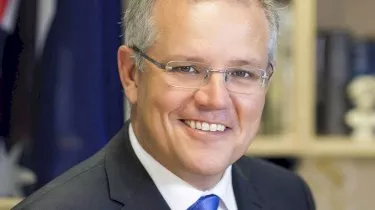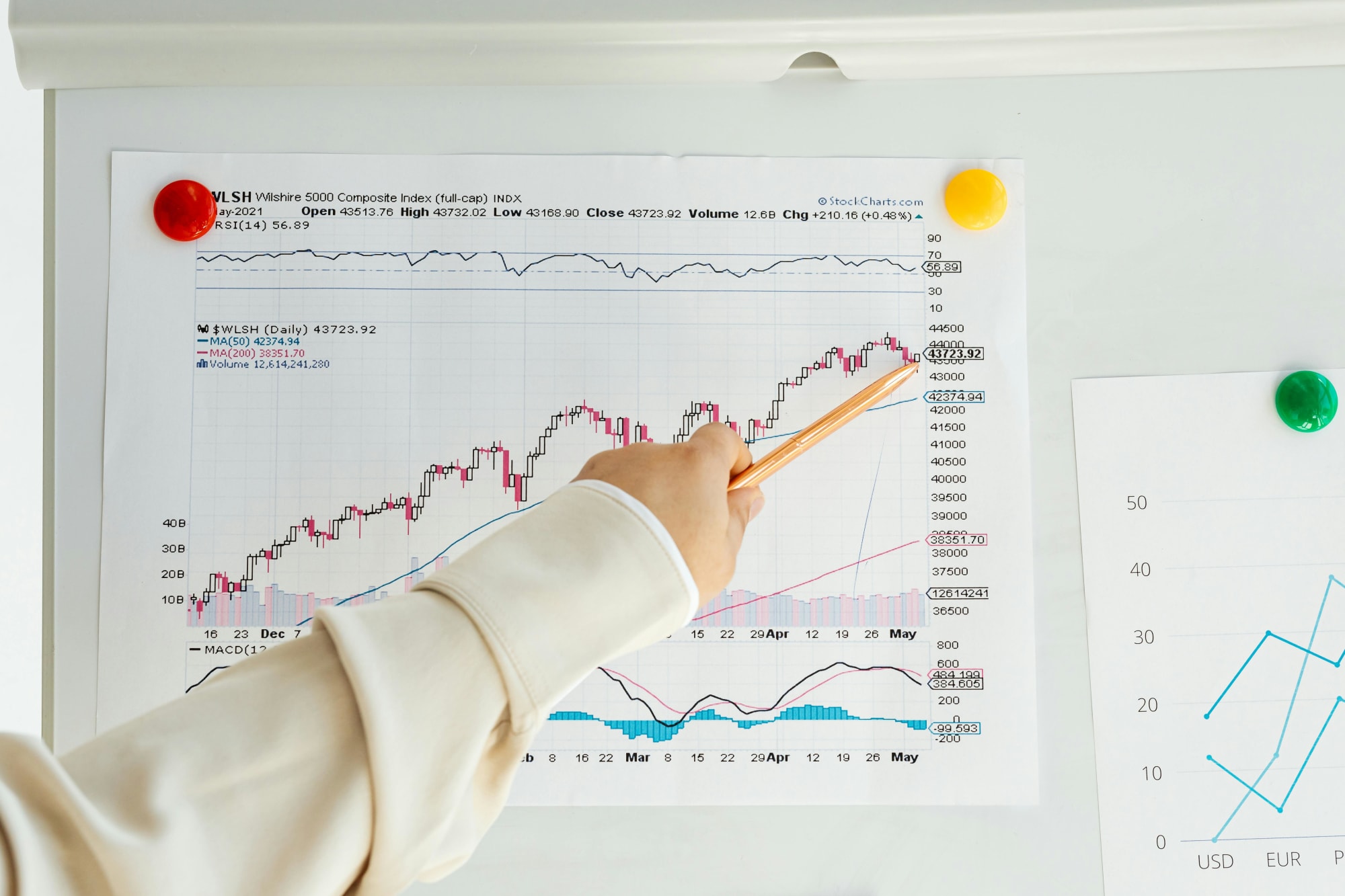Invest
Scott Morrison’s net zero plan promises to leave households $2,000 better off
Invest
Scott Morrison’s net zero plan promises to leave households $2,000 better off
Australia’s new plan to achieve net zero by 2050 is predicted to help households save on energy bills.
Scott Morrison’s net zero plan promises to leave households $2,000 better off
Australia’s new plan to achieve net zero by 2050 is predicted to help households save on energy bills.

The federal government has said that their revamped climate commitment will leave Australian households better off through reduced electricity prices.
According to the plan itself, “the modelling projects that Australia’s economy will continue to grow and Australians will enjoy sustained growth in material living standards, with our plan expected to increase our national income per person by almost $2,000 in 2050, compared with no policy action”.
Aside from economic growth, the other driver of this outcome is said to be the falling price of solar energy.
While solar energy is already cheaper to produce than other energy sources like gas, federal Minister for Energy and Emissions Reduction Angus Taylor said that the government’s new goal of “ultra-low-cost solar power” would see consumers pay as little as $15 per megawatt hour.

“By applying those technologies across various sectors, we can see how emissions will come down through choice through customers choosing those technologies,” he said.
Speaking at the unveiling of the federal government’s new long-term emissions reduction plan, Mr Taylor talked up the tangible benefits that this downward pressure on electricity prices would bring to consumers.
He said that the deployment of the low-emitting technologies that are expected to be used to transition the economy to net zero by 2050 is an area where Australia has played a leadership role for many years.
“This is the right plan for Australia – to summarise the outcome from it, which we’ll see in the plan, Australians are $2,000 better off on average in 2050 compared with no Australian action,” Mr Taylor said.
The government’s plan for reaching net zero emissions by 2050 itself noted that cheap and clean solar power is integral to lowering Australia’s carbon output.
“Reducing the costs of solar generation will also unlock the economic, employment and abatement potential of other priority low emissions technologies,” the report noted.
Many of the other technologies that the government is relying on to drive down carbon emissions will rely on an Australia-based supply of cheap and renewable energy in order to work.
For instance, the green credentials of clean hydrogen production are premised on the fact that the energy used to produce the hydrogen is drawn from renewable sources.
“Clean electricity at $15 per MWh would enable low-cost clean hydrogen production and increase our competitiveness in hydrogen export markets. It would also support cost-competitive production of low emissions steel and aluminium and emerging technologies like direct air capture of CO2,” the plan said.
Citing current trends around the price of renewable energy generation, the government projected that low-cost solar energy could become the single largest source of Australia’s electricity generation by 2050.
“Unlocking ultra-low-cost solar is therefore crucial for Australia’s electricity system to achieve near zero emissions,” the government’s plan said.
About the author

About the author


Economy
RBA's hawkish stance reflects inflation concerns, State Street economist comments
In a recent statement, the Reserve Bank of Australia (RBA) has signaled a hawkish stance on interest rates, drawing insights from financial experts about the implications for Australia's economic ...Read more

Economy
Navigating the inflation maze: How CFOs can outsmart economic hurdles in Australia
Fresh inflation data have cooled expectations of near-term rate cuts in Australia, intensifying pressure on margins, capital allocation and demand. Rather than wait for monetary relief that may not ...Read more

Economy
Inflation concerns rise as Australia's CPI climbs to 3.8% in October
Australia's latest Consumer Price Index (CPI) figures have sent ripples through the economy, with headline inflation accelerating to 3.8% year-on-year in October, up from 3.6% in September. The data, ...Read more

Economy
October CPI results pose challenges for RBA’s monetary policy stance
In a surprising turn of events, the October Consumer Price Index (CPI) data has raised eyebrows among economists and market strategists, revealing stronger-than-expected inflationary pressures in ...Read more

Economy
Global deal activity declines by 6% amid economic uncertainty, reports GlobalData
In a year characterised by economic turbulence and evolving market conditions, global deal activity has witnessed a notable downturn during the first ten months of 2025. According to GlobalData, a ...Read more

Economy
Australia’s softening labour market puts another RBA cut in play — here’s what business should do now
A four-year high in unemployment has revived expectations the Reserve Bank could deliver another rate cut as soon as November. With quarterly GDP growth running at 0.6 per cent and annual growth at ...Read more

Economy
Rising CPI reinforces RBA’s stance as rate cut expectations remain: State Street
State Street Global Advisors says the Reserve Bank of Australia (RBA) is likely to hold its current policy outlook following the release of September quarter inflation data, which showed an unexpected ...Read more

Economy
NSW SES boosts tsunami preparedness ahead of World Tsunami Awareness Day
As World Tsunami Awareness Day approaches on 5 November, the New South Wales State Emergency Service (NSW SES) is ramping up efforts to enhance tsunami preparedness along the east coastRead more

Economy
RBA's hawkish stance reflects inflation concerns, State Street economist comments
In a recent statement, the Reserve Bank of Australia (RBA) has signaled a hawkish stance on interest rates, drawing insights from financial experts about the implications for Australia's economic ...Read more

Economy
Navigating the inflation maze: How CFOs can outsmart economic hurdles in Australia
Fresh inflation data have cooled expectations of near-term rate cuts in Australia, intensifying pressure on margins, capital allocation and demand. Rather than wait for monetary relief that may not ...Read more

Economy
Inflation concerns rise as Australia's CPI climbs to 3.8% in October
Australia's latest Consumer Price Index (CPI) figures have sent ripples through the economy, with headline inflation accelerating to 3.8% year-on-year in October, up from 3.6% in September. The data, ...Read more

Economy
October CPI results pose challenges for RBA’s monetary policy stance
In a surprising turn of events, the October Consumer Price Index (CPI) data has raised eyebrows among economists and market strategists, revealing stronger-than-expected inflationary pressures in ...Read more

Economy
Global deal activity declines by 6% amid economic uncertainty, reports GlobalData
In a year characterised by economic turbulence and evolving market conditions, global deal activity has witnessed a notable downturn during the first ten months of 2025. According to GlobalData, a ...Read more

Economy
Australia’s softening labour market puts another RBA cut in play — here’s what business should do now
A four-year high in unemployment has revived expectations the Reserve Bank could deliver another rate cut as soon as November. With quarterly GDP growth running at 0.6 per cent and annual growth at ...Read more

Economy
Rising CPI reinforces RBA’s stance as rate cut expectations remain: State Street
State Street Global Advisors says the Reserve Bank of Australia (RBA) is likely to hold its current policy outlook following the release of September quarter inflation data, which showed an unexpected ...Read more

Economy
NSW SES boosts tsunami preparedness ahead of World Tsunami Awareness Day
As World Tsunami Awareness Day approaches on 5 November, the New South Wales State Emergency Service (NSW SES) is ramping up efforts to enhance tsunami preparedness along the east coastRead more








